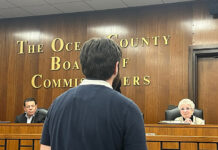
TOMS RIVER – When Kyril Kavetsky was 7 years old, he became connected forever to township history, having been part of a ceremony with Township Clerk J. Mark Mutter in the official name change of the community from Dover Township to Toms River Township.
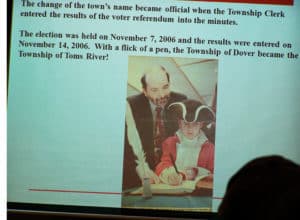
Kyril wore colonial attire for the ceremony, held at Township Hall in 2006, and was witness to the signature that changed the name of the township. On the evening of May 24, Kyril, now 17, reunited with Mutter who also serves as township historian and the chairman of the township’s 250th anniversary committee. Kyril attended a program hosted by the Ocean County Historical Society that chronicled the township’s early beginning to the present day.
Mutter noted that Mayor Thomas F. Kelaher and Kavetsky celebrate their birthdays on June 24, the same day as Toms River’s anniversary. Kelaher was present for the program along with his wife Carol, who is a member of the Ocean County Historical Society.
“Toms River’s story is one of diversity,” Mutter told an audience who crowded the lower floor of the Society’s 26 Hadley Ave. Toms River headquarters. “The township is celebrating its Semi-Quincentennial this year, the 250th anniversary of our founding as separate legal entity which occurred in 1767.”
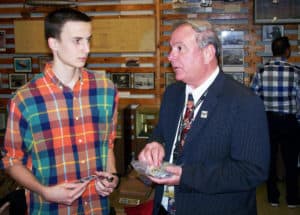
Mutter told the audience about how the community began as part of the British Empire. “There was no Ocean County. We were part of Monmouth County but before that our story of diversity began with the Lenni Lenape Indians, the original people who had been here for thousands of years.”
“The Indians left us with many familiar names like Manahawkin, which is in Stafford,” Mutter said. Mutter said that Dutch, Swedish and Finnish settlers came to the area but “the English laid claim to New Jersey in 1664. For a time New Jersey was divided into East and West but England’s Queen Anne united New Jersey into one.”
Thomas Luker, who married a Lenni Lenape woman, has been officially recognized as the source of the “Tom” in Toms River. Mutter assured one attendee in the audience who asked about the legend of “Ol’ Indian Tom” that there was no evidence present to suggest the name came from anyone other than Luker who was a popular figure in the late 1700s.
“The Cranberry Inlet existed in present day Ortley Beach, which was named after Michael Ortley. By 1767 there was a lot of commerce provided through the Cranberry Inlet and we were part of Shrewsbury in Monmouth County. Shrewsbury still exists but it is now a very small community,” Mutter said.
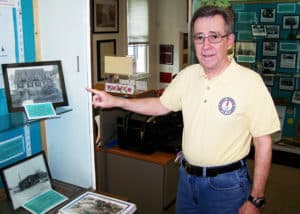
Mutter said that on June 24, 1767 by a legislative act following a petition to the Royal Assembly by the people, the town of Dover was formed. “We are nine years older than the United States. Shrewsbury was becoming unmanageable. It was too big to travel around and so a petition went before William Franklin, the son of Ben Franklin. William Franklin was the last governor of New Jersey under England.”
Ironically, William Franklin and his more famous father had different views about American independence. “Ben went the patriot path and his son went down the Royalist path,” Mutter said.
One of the five Cub Scouts from Troop 57 Den 3 present at the program asked Mutter about the ‘Battle of Toms River’ which Mutter said the patriots had lost. “The British won that battle and burned Toms River down. Ironically, it was William Franklin who sent those troops after he had been removed as governor. He sought revenge.”
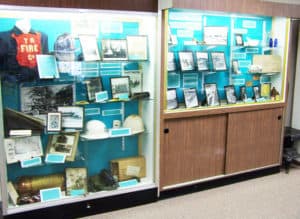
Mutter added that the town of Dover included much of what is now northern Ocean County, including Brick, Jackson, Lakewood and Berkeley townships. It was not until 1798 that it became the township of Dover and reduced its size. The name was believed to have possibly come from the White Cliffs of Dover, England, by British settlers but Mutter said there was no evidence to support that idea. “In 1992 we reached out to England to see if they had any documents to support that idea but there were none.”
Mutter concluded by saying, “This year is a civics lesson for all of us. Toms River’s story remains one of diversity.” The township’s 250th anniversary celebration will continue on June 24 with special festivities taking place at the Huddy Park.


